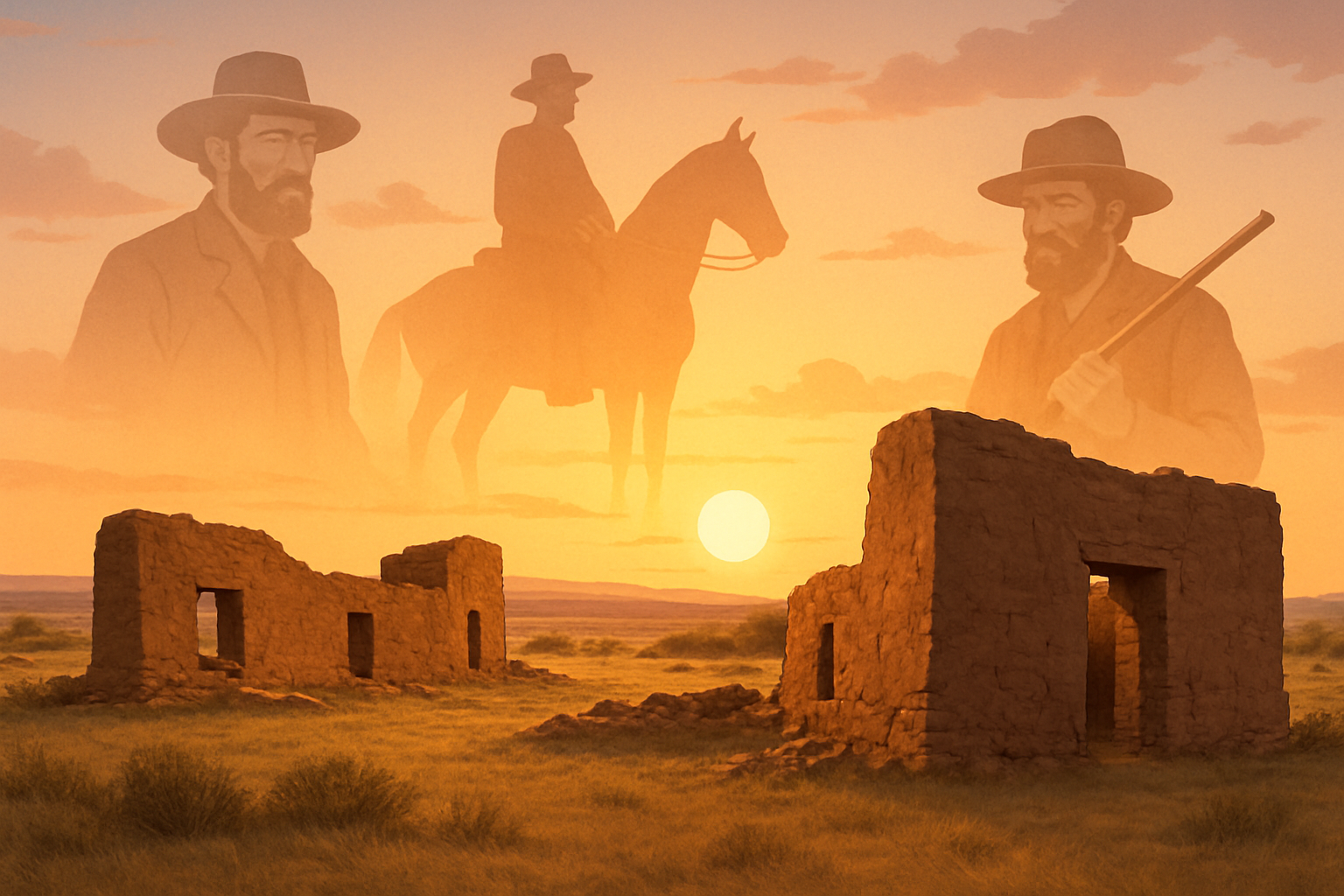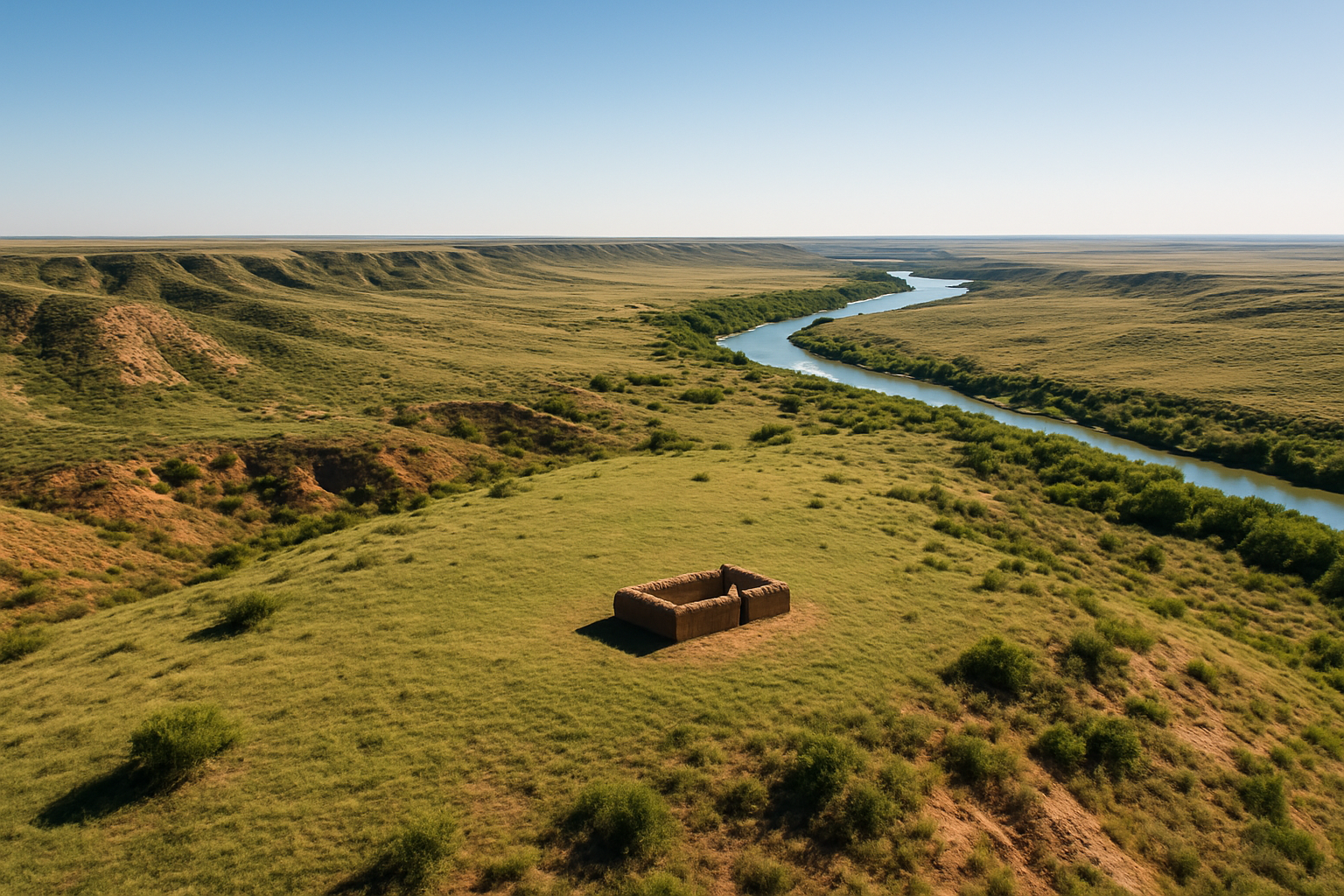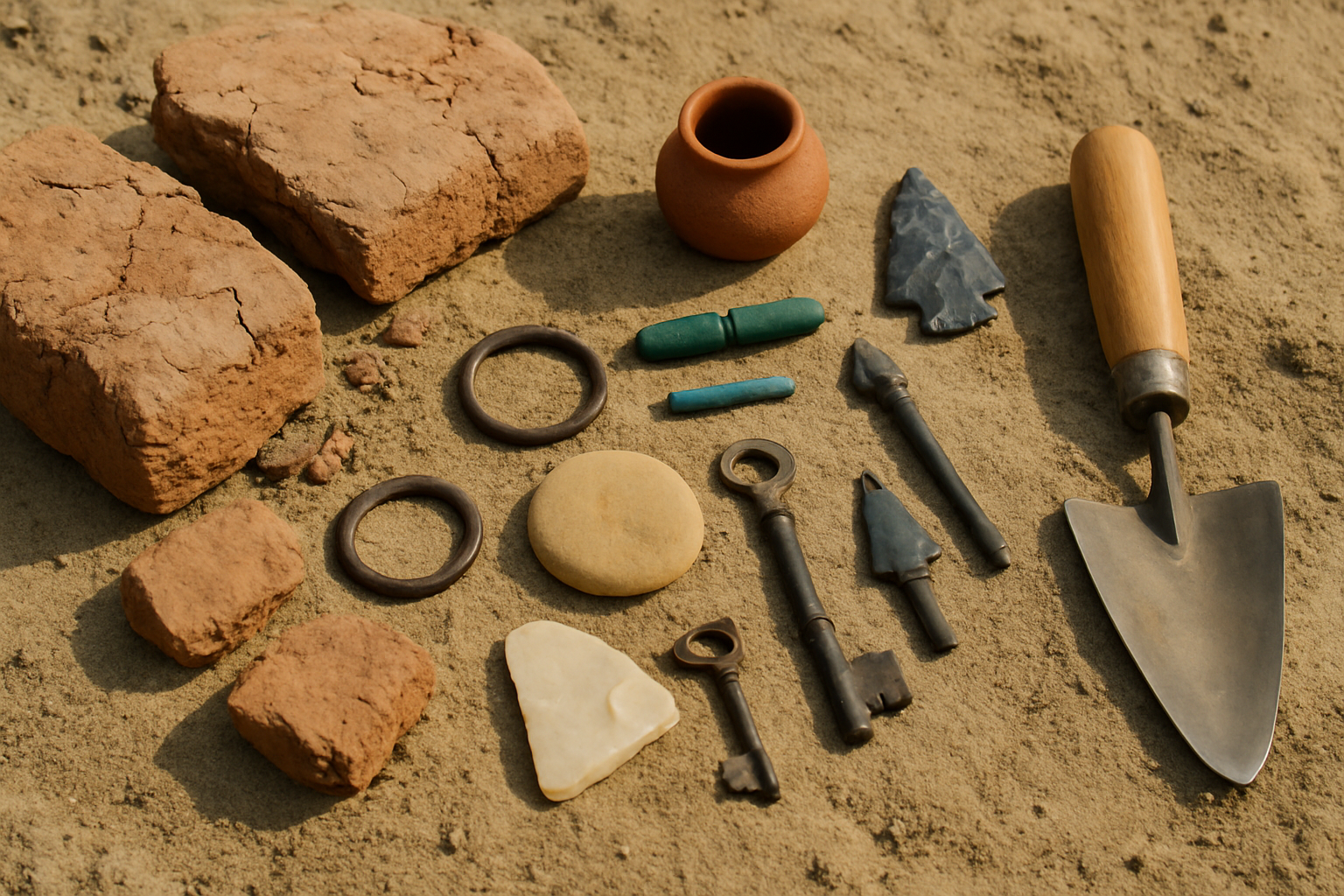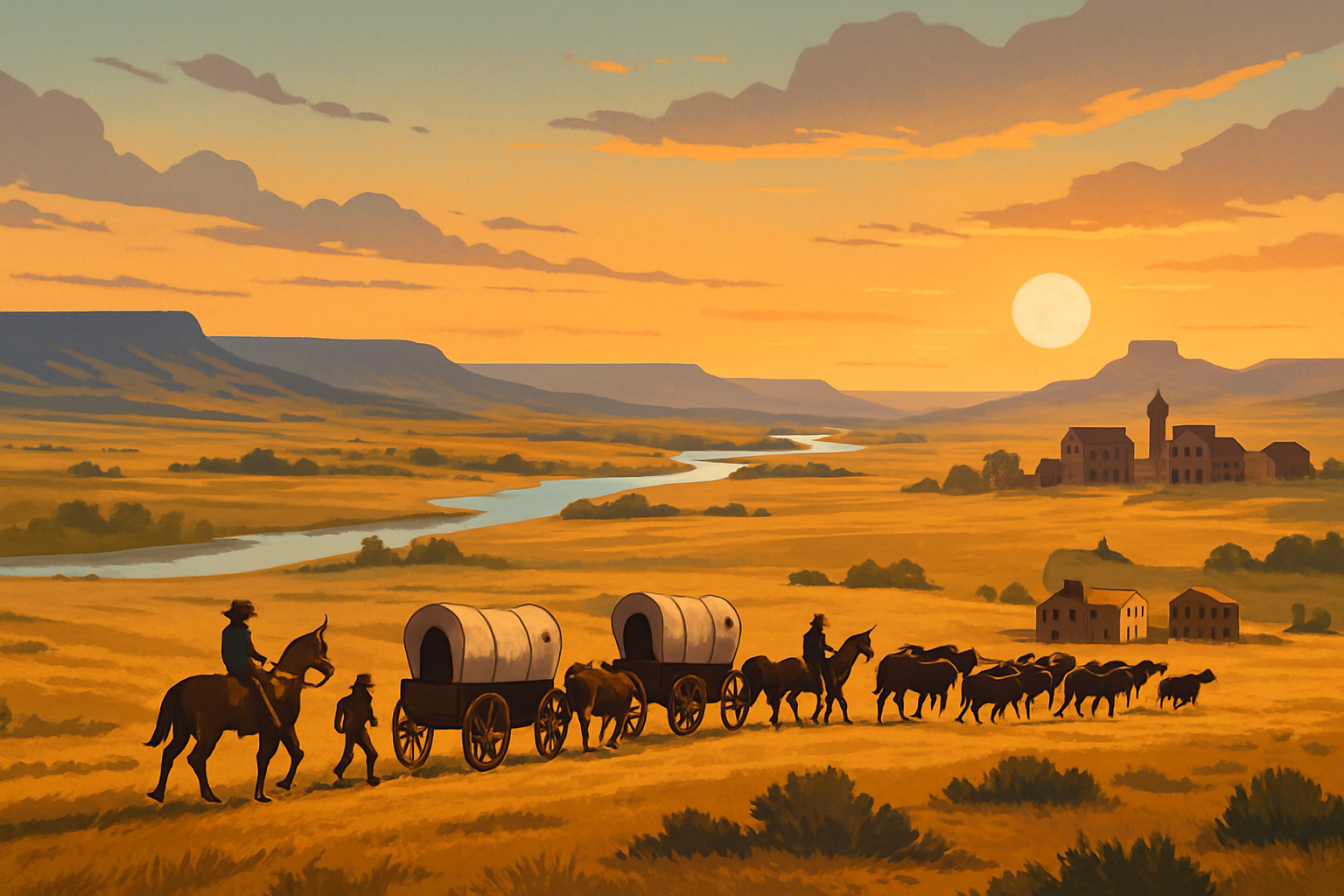Adobe Walls Location and Historical Significance Explained

The adobe walls location was a trading post and fort built back in the 19th century out in the Texas Panhandle. Its prime position and the fierce battles that unfolded there make it a pretty significant spot in American frontier history—especially if you are digging into Native American relations and the relentless push westward.
This article takes a closer look at where Adobe Walls is nestled. It dives into the area's rich and tangled historical roots, lays out the key battles that went down there and explores its fascinating archaeological and cultural significance.
Just Where Exactly Is the Adobe Walls Location
Adobe Walls is nestled in the Texas Panhandle near the Canadian River about 35 miles north of Borger. If you like a good pinpoint its coordinates are about 36.8711° N latitude and 100.7604° W longitude.
- Nestled in Hutchinson County, Texas in the heart of the vast Texas Panhandle
- The nearest little hubs you’ll find are Borger down south and Stinnett to the west
- Sitting beside the Canadian River which provides vital water and acts as a natural boundary
- Mostly reached by winding rural roads and a few gravel paths. Good luck finding a direct highway into this quiet spot
- Today it’s cherished as a historic site and protected area offering a handful of visitor facilities to keep its charm intact

Aerial photograph highlighting the remote location of Adobe Walls near the Canadian River in the Texas Panhandle.
A Quick Spin Through the Story of Adobe Walls
Adobe Walls was built back in 1835 by a group of traders from Bent's Fort, with William Bent at the helm. It began its life as a trading post and fortified settlement, serving as a key pit stop for trade between Native American tribes and European-American settlers during a whirlwind period of frontier expansion.
- Built back in 1835 mainly as a trading post—a hub where deals were struck and stories exchanged
- Established by traders with close ties to Bent's Fort including the notable William Bent himself
- Served as a meeting ground for the Comanche, Kiowa and Arapaho tribes as well as settlers trying to make a life on the frontier
- Pulled double duty as a defensive fort during those restless unsettled times out west
- Archaeological digs have unearthed artifacts that offer a fascinating glimpse into the trade and daily hustle of the people who once called it home
Adobe Walls Battles A Pivotal Chapter in History That Still Resonates
Adobe Walls earned its place in history thanks to two major battles fought there: one in 1864 and another a decade later in 1874. These fierce encounters pitted Native American tribes against settlers and buffalo hunters in disputes over land and resources on the ever-changing frontier of the American West.
In 1864 during the thick of the American Civil War the very first Battle of Adobe Walls unfolded, pitting U.S. soldiers and their allied militia against the Southern Plains tribes in a tense showdown that set the stage for what was to come.
Ten years later in 1874 the second, far more famous battle took place. This time a handful of buffalo hunters standing guard at a trading post accomplished a remarkable feat by holding their ground against a sizable force of Native American warriors.
The key players in this drama were U.S. soldiers, settlers trying to make a life, tough-as-nails buffalo hunters and warriors from the Comanche, Kiowa and Cheyenne tribes, each bringing their own strategies to the table.
The fight itself was a blend of using the sturdy adobe buildings as fortresses and Native Americans employing guerrilla-style tactics that kept everyone on their toes. Firearms played a critical role that changed the dynamics completely.
These clashes weren’t just random scrambles. They marked a turning point that led to a beefed-up military presence and not surprisingly the eventual displacement of Native peoples from the region — a chapter of history that still resonates today.
"> The battles at Adobe Walls really capture the fierce determination of Native tribes standing their ground against the relentless push of American settlers into their lands. It’s one of those pivotal moments on the frontier that you just can’t overlook—where resistance met expansion head-on, with all the tension and turmoil that came with it. — Dr. Emily Carver, historian specializing in 19th-century Western U.S. conflicts"
The Lasting Impact of the Battles on Local Indigenous Tribes and Settlers
The battles at Adobe Walls left a deep mark on both Native American tribes and settlers alike. For tribes like the Comanche, Kiowa and Cheyenne these fierce clashes were desperate attempts to hold onto their hunting grounds and way of life, which was constantly under siege. While the Native forces showed remarkable coordination and courage you have to admire, their defeat quickened the pace of their forced removal. Settlers and buffalo hunters saw these battles as a harsh reminder of how perilous frontier life could be but it also steeled their determination to make the land their own. Politically, these fights ramped up U.S. military efforts to tighten the grip on the Plains and pushed policies that further shoved indigenous communities aside economically, culturally and territorially.
Archaeological and Cultural Importance and Why It Matters More Than You Might Think
Recent archaeological digs at Adobe Walls have brought to light artifacts and building remains that paint a vivid picture of life on the 19th-century frontier, along with its complex interactions with Native Americans.
- Discoveries include trade goods such as beads and weapon fragments along with pottery dating back to the mid-1800s. These items give us a fascinating glimpse into the past
- Excavations have uncovered adobe bricks and structural foundations that back up what the historical records have been whispering all along
- Preservation efforts combine local historical societies and state heritage programs working hand in hand to keep the site safe and sound
- Adobe Walls is a prime example of how Plains tribes adapted during westward expansion and showed resilience in the face of change

Archaeological excavation at Adobe Walls revealing historic artifacts and adobe bricks from the 19th century.
A Down-to-Earth Guide for Making the Most of Your Visit to Adobe Walls
Travelers and history buffs looking to explore Adobe Walls should be ready for a pretty remote and no-frills experience. You’ll get there via unpaved roads, so a bit of roughing it is part of the charm. The sweet spot for visiting is definitely spring or fall, when the weather plays nice and won’t have you melting or shivering.
- To reach Adobe Walls, drive north from Borger along State Highway 136 and then hang a right onto the county roads marked for the site
- Parking’s available nearby but it’s all unpaved lots so don’t expect anything fancy—think rugged charm rather than smooth pavement
- If you’re staying overnight, Borger and the nearby town of Stinnett offer motels and cozy bed-and-breakfasts to relax in
- Several local heritage groups run guided tours, especially when the hunting season takes a break. It’s a great time to soak in the history without the crowds
- Double-check local rules including firearm regulations and visiting hours to keep things safe and sound for everyone
Important Safety and Conservation Tips Every Visitor Should Keep in Mind
Visitors to Adobe Walls should protect the fragile adobe buildings and the natural landscape by sticking to marked trails and steering clear of touching the walls. They should also pack out all their trash. Facilities are limited here, so come prepared with plenty of water and supplies.
The Enduring Impact and Contemporary Views on Adobe Walls
The adobe walls location stands as a striking reminder of the cultural clashes and hard-won resilience that helped shape the rugged American frontier. It has inspired many works in literature, film and education that explore the complicated relationship between settlers and Indigenous peoples.
- Often pops up in Western novels and historical fiction exploring the gritty sometimes romanticized life on the frontier
- Featured in documentary films that shed light on Native American history and settler expansion
- Woven into Texas educational programs as a key piece of teaching regional history
- Keeps its place in local folklore with tales full of heroism and unforgettable cultural clashes
- Honored annually through lively reenactments and heritage festivals that community groups organize with plenty of heart
"> Adobe Walls invites us to dive into the intricate tales of our past, gently nudging us toward a deeper, more meaningful grasp and ongoing chats about our shared history. Its lessons still hold a vital spot in cultural education and the ever-important journey toward reconciliation today. — Dr. James Thornton, cultural studies educator"





